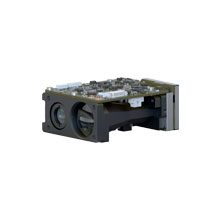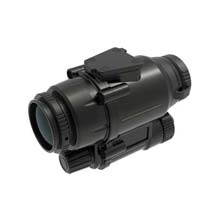3 Reasons Why Thermal Cameras Can Solve Challenges in Steel Production

Steel production is a complex and demanding process that involves various challenges and risks. To overcome these challenges and ensure smooth operations, the integration of advanced technologies becomes crucial. One such technology that has gained prominence in industrial applications is thermal imaging, specifically thermal cameras. These innovative devices offer a range of benefits, from enhancing safety and security to improving quality control and energy efficiency. We will explore three compelling reasons why thermal cameras can effectively solve challenges in steel production in this blog.
Challenges in Steel Production and the Importance of Applying Thermal Imaging
Steel production involves high temperatures, intense heat sources, and heavy machinery. These factors pose significant challenges that can impact the safety, quality, and efficiency of the process. Traditional methods of monitoring and inspection may fall short in identifying potential risks or defects.
Enhancing Safety and Security
One of the foremost reasons to integrate thermal cameras in steel production is to enhance safety and security within the facility. They can detect hot spots and anomalies in real-time, enabling early identification of equipment overheating or potential fire hazards. By continuously monitoring the heat signatures of machinery and equipment, thermal cameras can help prevent accidents and mitigate risks. Additionally, these cameras can track the heat patterns of workers, ensuring their well-being and safety in hazardous environments. The ability to identify equipment malfunctions or failures promptly further contributes to a safer and more secure work environment.
.png)
Infrared thermal imagers can provide real-time online monitoring of the temperature of hot-blast stove pipelines, which not only affects the safety and risk warning capabilities of the entire blast furnace ironmaking process but, more importantly, the lives of steelworkers.
Improving Quality Control
Maintaining strict quality control standards is essential in steel production to ensure the integrity and durability of the final product. Thermal cameras play a vital role in this aspect. By accurately monitoring temperatures throughout the production process, thermal cameras help optimize heating and cooling operations, ensuring consistent and controlled temperatures for the steel. This minimizes the risk of thermal stress and distortion, resulting in higher-quality steel products. Moreover, they aid in defect detection by identifying surface irregularities, cracks, or improper cooling or quenching. Early detection enables timely intervention, reducing the chances of substandard or defective steel reaching the market.
.png)
Online thermal imaging equipment can provide continuous, comprehensive temperature monitoring of all the inner chambers of the refining furnace, allowing real-time control of the state of the inner chambers.
Improving Energy Efficiency and Reducing Costs
Energy consumption is a significant concern in steel production due to the high temperatures involved. Thermal cameras offer a valuable solution by enabling real-time monitoring of energy usage. By identifying energy wastage in heating processes, thermal cameras facilitate optimization strategies that lead to improved energy efficiency. Steel manufacturers can pinpoint areas where energy is being unnecessarily consumed and implement corrective measures, thereby reducing operational costs and environmental impact. Furthermore, thermal cameras provide valuable data for predictive maintenance, enabling early detection of equipment failures or inefficiencies. This proactive approach helps minimize unplanned downtime, reduces maintenance costs, and prolongs the lifespan of machinery and equipment.
.png)
The slag that can shorten the lifespan of the equipment has a significantly different temperature from the molten steel. By using an infrared thermal camera to provide real-time temperature imaging, it becomes possible to detect the location of the slag.
We can see that the application of thermal imaging cameras in steel production addresses critical challenges and offers significant advantages. By enhancing safety and security, improving quality control, and optimizing energy efficiency, thermal cameras contribute to the overall efficiency and profitability of steel manufacturing processes. As the steel industry embraces digital transformation, the adoption of thermal imaging technologies becomes increasingly important. By investing in thermal cameras, steel manufacturers can ensure a safer work environment, deliver higher-quality products, and achieve substantial cost savings. It is time for the steel industry to recognize the immense potential of thermal imaging cameras and embrace their utilization for a more efficient and competitive future.

















